The White Tiger, by Aravind Adiga
I’m not a fan of state of the nation novels as a rule. The themes often swamp the characters. The message is usually more important than the prose. They tend not to be subtle (since making a point is the point).
State of the nation novels about contemporary India though? That’s a different matter. All those problems are probably still going to be there, but at least the subject is interesting.
Characters in The White Tiger exist for the sake of the story. It’s not that they’re unconvincing as such, but you wouldn’t read the book for psychological insight. The prose is effective, but it doesn’t strive for beauty. The White Tiger is not a subtle book.
Whatever flaws it may have though (and arguably nothing above is actually a flaw in the context of this book) The White Tiger won the 2008 Man Booker prize. I don’t follow the Booker closely but I do recall not everyone thought it should have won. Some thought it shouldn’t even have been longlisted.
I don’t actually have a particularly strong view on whether The White Tiger deserved to win the Booker. I didn’t read many of its competitor novels and in all honesty I think the idea of there being a “very best book of the year” is silly. I do think though that The White Tiger succeeds on its own terms.
The White Tiger is a novel about the life of a man named Balram. Balram grew up in what he calls “the Darkness” – rural India. For him this is the India of poverty and of ignorance. Balram is of the sweet-makers’ caste, and in the Darkness caste determines destiny.
One day a school inspector visits Balram’s district:
The inspector pointed his cane straight at me. ‘You, young man, are an intelligent, honest, vivacious fellow in this crowd of thugs and idiots. In any jungle, what is the rarest of animals – the creature that comes along only once in a generation?’ I thought about it and said: ‘The white tiger.’ ‘That’s what you are, in this jungle.’
Balram is the White Tiger. He is that rarest of beasts, a country Indian who leaves behind his village, his caste and even his family. Balram gets rich through his own efforts. Everyone else he encounters gets rich through being born that way, through connections or through corruption. The trouble is as Balram reveals very early on his own efforts included murder.
The obvious comparators for The White Tiger are Mohsin Hamid’s The Reluctant Fundamentalist and Indra Sinha’s dazzling Animal’s People (which I read before I started this blog – it’s excellent, here‘s John Self’s review which I absolutely agree with).
All three novels share a common feature. They all have unconvincing framing devices. In Animal’s People the entire novel is supposedly narrated by the protagonist into a tape machine. In The Reluctant Fundamentalist the entire novel is supposedly a conversation between the protagonist and an unnamed American, and we only hear the protagonist’s side of the conversation. In The White Tiger the entire novel is supposedly a series of letters dictated by Balram and addressed to Wen Jiabao who is shortly to visit Bangalore where Balram now lives.
Here’s the thing. The framing device doesn’t really make sense. Balram can’t post these letters. He can’t even have them typed up. He confesses far too much criminality for them ever to be heard by anyone but him. So it goes. Like in The Reluctant Fundamentalist, like in Animal’s People, you either have to accept the device or close the book. I chose to accept it.
Each night Balram dictates a letter, and each letter tells something of his past. He grows up in the village hearing tales of the Great Socialist who is going to transform the lives of the poor, but the transformation is always after the next election and the elections are all bought. The poor’s votes are cast for them and anyone who tries to cast his own is seen as a madman, and beaten mercilessly.
There were three black goats sitting on the steps to the large, faded white building; the stench of goat faeces wafted out from the open door. The glass in most of the windows was broken; a cat was staring out at us from one cracked window. A sign on the gate said: LOHIA UNIVERSAL FREE HOSPITAL PROUNDLY INAUGURATED BY THE GREAT SOCIALIST A HOLY PROOF THAT HE KEEPS HIS PROMISES Kishan and I carried our father in, stamping on the goat turds which had spread like a constellation of black stars on the ground. There was no doctor in the hospital. The ward boy, after we bribed him ten rupees, said that a doctor might come in the evening. The doors to the hospital’s rooms were wide open; the beds had metal springs sticking out of them, and the cat began snarling at us the moment we stepped into the room.
Real power lies with the rural landlords, but to make money you have to leave the village entirely. Balram does, and after working in a tea shop where he spends his time learning from listening to the customers rather than serving them, he tries to get a job better than anyone else in his family has dreamt of. He tries to become a driver:
We went into the house where the taxi drivers lived. An old man in a brown uniform, which was like an ancient army outfit, was smoking a hookah that was warmed up by a bowl of live coals. Kishan explained the situation to him. The old driver asked, ‘What caste are you?’ ‘Halwai.’ ‘Sweet-makers,’ the old driver said, shaking his head. ‘That’s what you people do. You make sweets. How can you learn to drive?’ He pointed his hookah at the live coals. ‘That’s like getting coals to make ice for you. Mastering a car’ – he moved the stick of an invisible gearbox – ‘it’s like taming a wild stallion – only a boy from the warrior castes can manage that. You need to have aggression in your blood. Muslims, Rajputs, Sikhs – they’re fighters, they can become drivers. You think sweet-makers can last long in fourth gear?’
From there it’s all upwards. Balram becomes second chauffeur to a rich family. His master is an indulgent example of a new breed of Indian. He’s foreign-educated and likes to think his staff are as much friends, family almost, as they are servants. His reward is to have his throat cut by Balram. There’s an ambivalence here. The book is filled with anger at the injustice it describes, but the only man in it who tries to act at all justly (he fails, but he tries) is killed for for doing so.
I began by talking about this as a state of the nation novel, and that’s where making Balram a driver pays dividends for Adiga. Making Balram a rurally born driver who later becomes a Bangalore entrepeneur allows Adiga to simultaneously present a view of the servant class, of village life (the darkness) and of the old and new moneyed classes.
Balram then is a vehicle as well as driver. He’s a means by which Adiga can explore a wide range of different strata of Indian society. It’s a mistake then to look to him for deep characterisation. Balram here serves the same role as the protagonist in a classic science fiction novel. He is a means to enter a world. He isn’t a world in himself.
The book has a dark undercurrent of humour in it which is often welcome, but in the main it’s relentlessly ugly. Intentionally so, but also unremittingly so. Balram’s metaphor for India is a rooster coop. For him it’s a country where everyone is kept in their place and where the poor opress themselves by crushing anyone different to them – anyone who seeks to escape what he was born into.
The Rooster Coop was doing its work. Servants have to keep other servants from becoming innovators, experimenters, or entrepreneurs. Yes, that’s the sad truth, Mr Premier. The coop is guarded from the inside.
It’s not all that blunt. Some points are made more obliquely (“When he opened the door of the apartment, he pointed to the floor. ‘Make yourself comfortable.’”), but there’s no upside here. It’s a relentless portrait of a vicious and ugly country ruled by avarice and corruption.
Adiga is excellent on the small hypocrisies of the rich. I loved a scene where Balram cracks open the window of the limo he is driving to give a beggar a coin, and is then berated by those he is driving who go on to talk loudly about how much they give to charity. Balram is a sociopath and a killer, and even so he’s better than those around him.
If I had to make a comparison to another writer it wouldn’t ultimately be to Hamid or Sinha. Instead it would be to Dickens. I have mixed views on Dickens. He’s often maudlin. His characterisation is frequently weak and his novels mix the journalistic with the sensationalist (and occasionally with the improving message). For all that though Dickens was a tremendously effective social critic. He sought in his writing to show what was wrong with his society, and for me that’s what Adiga is seeking to do here.
Does Adiga succeed? Not entirely. This is sometimes a crude book. It’s targets are obvious ones and there’s little here to surprise a reader who already knows much about India. I could make all those criticisms and more though of Hard Times (swapping England for India). Does Hard Times succeed? Not entirely, but in the end yes, it does. In the end The White Tiger succeeds too.
Like I said at the beginning, I don’t know whether The White Tiger deserved to win the Booker. Having now read it though I will say that I can entirely understand why it was nominated, and why at least some of the judges championed it.
I’ll end with one final quote:
My humble prediction: in twenty years’ time, it will be just us yellow men and brown men at the top of the pyramid, and we’ll rule the whole world. And God save everyone else.
One of the many messages of The White Tiger is that the desperate fight harder than the comfortable. This is a state of the nation novel, but it’s also a state of things to come novel. Balram is a future. Adiga here portrays that future in the hope of holding a mirror to it, in the hope that it might recognise itself and learn to be better than it looks right now.
John Self’ wrote a highly critical review of The White Tiger over at The Asylum, here. Trevor of themookseandthegripes wrote a much more positive one here. Both, as ever, are worth reading. There’s also an interesting interview with Adiga at the Guardian here where he talks a little more about the ideas underlying the novel.


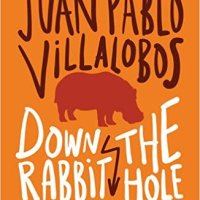
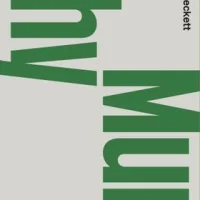
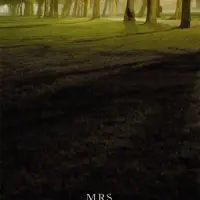
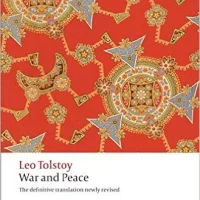
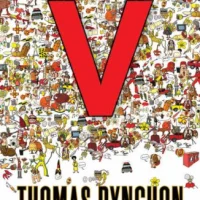

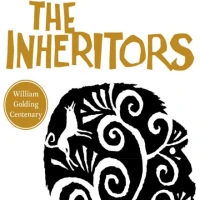
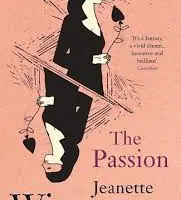



A strikingly fair review Max: but one that reminds me why I wasn’t really interested in this first time round.
I’ve noticed at lot of people reading this on my commute since it was published; it’s funny, since the book doesn’t seem to have any particular merit as a piece of writing, I wonder what they’re all getting from it. I suppose it being about India is by default somewhat exotic and the themes are “current affairs”-y.
It’s funny, but when you mention Dickens as a comparison I can’t think of an English writer who is producing that type of book. Peter Carey’s latest was called Dicken-esque in places, but that was more for the exuberence and pack-it-all-in approach I thought, rather then the social commentary /state of the nation stuff you decsribe here.
Yeah, if you read for the quality of the writing then Adiga’s not your man. I’m not saying he’s a bad writer in the slightest, but that’s not what this book’s about.
It’s where I disagree with John’s review (which remains as ever a very well written review). I think John was disappointed to find a Booker novel which was weak on characterisation and where the writing didn’t sing. As I say though I don’t think though that was ever its goal which is where I come to Dickens.
Dickens for me is a decidedly mixed comparison. Hard Times is probably my favourite of the Dickens’ I’ve read, but it has huge flaws. At times it’s grossly sentimental, it’s moralistic, it’s longer than I think it needs to be and while the writing’s solid Dickens is no Flaubert.
All that said characters like Mr Gradgrind (Dickens had a wonderful knack with names at times) stay with me. The critique of educational policy, of the lack of a social safety net and of a legal system that gave rights to the rich but not the poor still holds good even if some of the specifics no longer apply.
As to what the readers are getting from this, well, I think the traditional stuff. It’s a solid story. There’s a distinct whydunnit element to it which I think to many people is still quite a novel idea (to be fair it’s not that widely used an approach, Killing Roger by Tim Parks is probably the best whydunnit I can think of off the top of my head) and the descriptive writing is pretty good. The current affairs angle you note doesn’t hurt either (I included the final quote partly to flag that particular issue).
If you read books to visit other worlds inside the pages then on that score it delivers. I suspect most readers of this blog have other goals, but that doesn’t invalidate that one.
I read quite a few Indian and Anglo-Indian authors but for some reasons I wasn’t tempted by this one at all. Booker or no booker. That you mention that it isn’t subtle just confirms what I was suspecting. But it’s really only a hunch. I can’t say I never read books that aren’t subtle but then its pure genre.
Thanks for the review in any case. It gave me a good impression of the book.
I’m interested in that Tim Parks novel you mention in your reply. I’ve only read one of his novels but thought it might be worth reading more of him.
Tim Parks is an underappreciated writer. Killing Roger is his sideways take on the detective genre (though I wouldn’t call it a genre novel). It opens with a woman standing over the body of her lover, Roger, whom she has just murdered. The novel is about why. As I recall (it’s been a few years) it’s very nicely done.
It uses murder as a trigger for character study. Since we know what she did and how the only thing that remains of interest is motive. To understand that we need to understand her, to understand Roger and to understand their relationship.
I wasn’t tempted by this one either–probably because I kept seeing it everywhere I went. Now I am seeing The Last Man in the Tower everywhere and I’m having the same reaction.
Have you read Bleak House, Max? It’s my favourite Dickens and it also makes my top ten book list.
You recommended Killing Roger to me and I loved me. Reminds me a bit of Bainbridge now I think about it.
Pingback: Tiger Portrait Classic
I never got the dickens link in the I felt this like you said was more about the clash of old and new india together and the characters in the book where there just to drive the story forward ,shame he was much better in between assassinations which had a hint of Narayan in it style and outlock ,the new one doesn’t grab me either ,all the best stu
Despite your fair review, I’m not tempted by this one. There seem to be a mix of genres that confuse the literary reader.
I think I enjoy “state of the nation” novels, although it’s a new category for me, so I’m not sure about the books it’s supposed to include. (I still don’t know if English readers have more categories or if I just don’t know the French ones. Caroline, any help with this?)
I would second Guy’s recommendation of Bleak House although my appreciation is coloured by subjective memories of realising (for the first time) that there is more to a book than the story-line. Yeah, I was a bit of a late starter.
The White Tiger didn’t do it for me when I read it last year. It is not the only Booker winner I have read which left me on the fence. I think, Max, you pin down those factors which I considered indefinable very effectively. I have a clearer idea now of why I didn’t like the novel and why I thought that I should.
Is the Booker supposed to single out the best book of the year? That is indeed silly. I have to think of it in terms of the Judges’ best book of the year, which is more helpful, particularly if you know what their criteria are. This year I believe they have stated that they are aiming to choose a book that people will actually want to read. Which, if they mean what I think they mean, does not accord with my notion of a good book…
Hi all, sorry for the slow replies – business travel.
Adiga is pretty omnipresent, where other authors like Deb (who I have one of but have yet to read) are barely known. That’s not Adiga’s fault, but I would like to see the attention broaden out. There’s a lot of interesting fiction coming out of India now.
I’ve not read Bleak House. I’ll check it out. I’ve read Hard Times of Course, David Copperfield (dire), Great Expectations (great until he grows up, after which my expectations were dashed), Oliver Twist (I think, not that I remember anything of it), and I think some others but I forget which.
Stu, the Dickens’ link was the social critique and the focus on a view of society over individual character. I read an interview with Adiga recently where he said he didn’t want his works seen as pure social commentary, and to be fair they’re not, but it is an important strand I think.
Narayan is marvellous. A comparison to him is high praise.
Emma, it’s more a description than a category (if that’s a real difference). It’s a novel which is about a society and where it finds itself at a given time, rather than about language or character (primarily about, a novel may of course be about all those things but some tend to dominate).
The very best bit is a quote from the Booker website. This year I think they may fail to live up to that ideal.
Finally catching up on some posts (after two months of solid hospital visiting). I’m with you Max. I liked the book too. Unfortunately I read it before I started blogging … but I liked its darkly humorous approach to the topic. It’s not subtle – neither as you imply is Dickens. I thought Balram was a credible voice, albeit an antihero. And by credible I don’t of course mean realistic, but that he made sense within the context of the book. In other words, once he was established, every step in his progression/every choice he made made sense. One of the themes that came out of it too, as I recollect, was the challenge of being “a man” in such a master-servant society.
Oh, and like you I chose to accept the framing device (as I also did for The reluctant fundamentalist).
I read somewhere that Adiga said he wanted “to entertain and disturb”. I reckon he did that.
WG, I agree entirely. Not my most cogent comment I admit, but I think you’re right that Adiga achieved his goals and I agree with you on the lack of subtlety but also on the humour, the internal credibility and the themes (and you’re right about that one about being a man in a society which casts you solely as servant).
Pingback: a singular air of reluctance or compulsion | Pechorin’s Journal
Pingback: Hookah Review